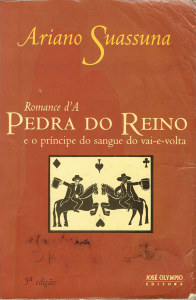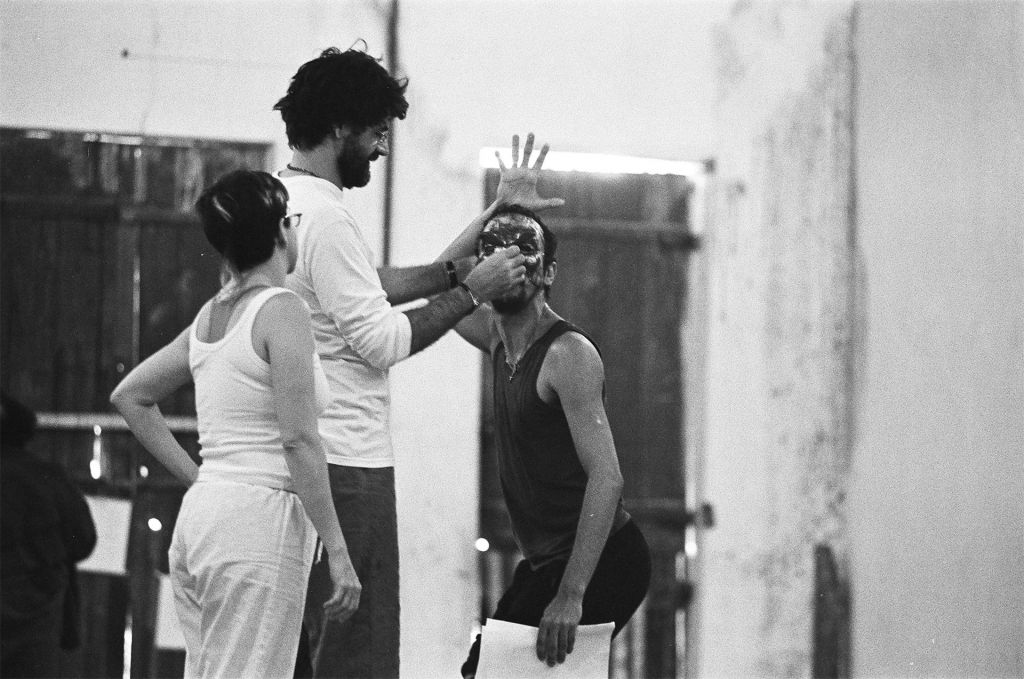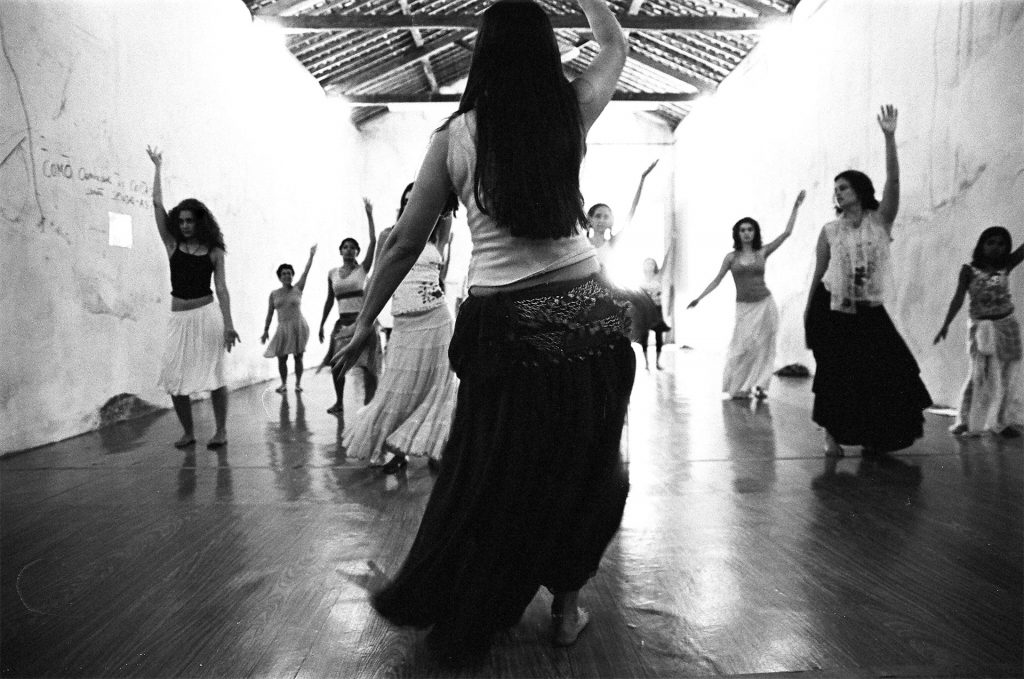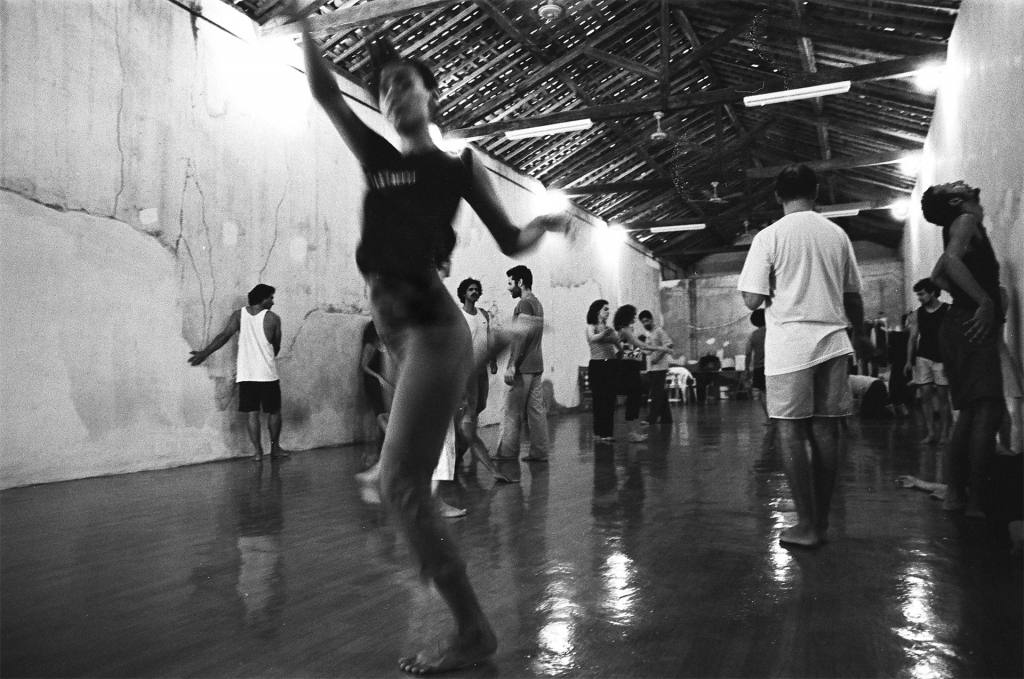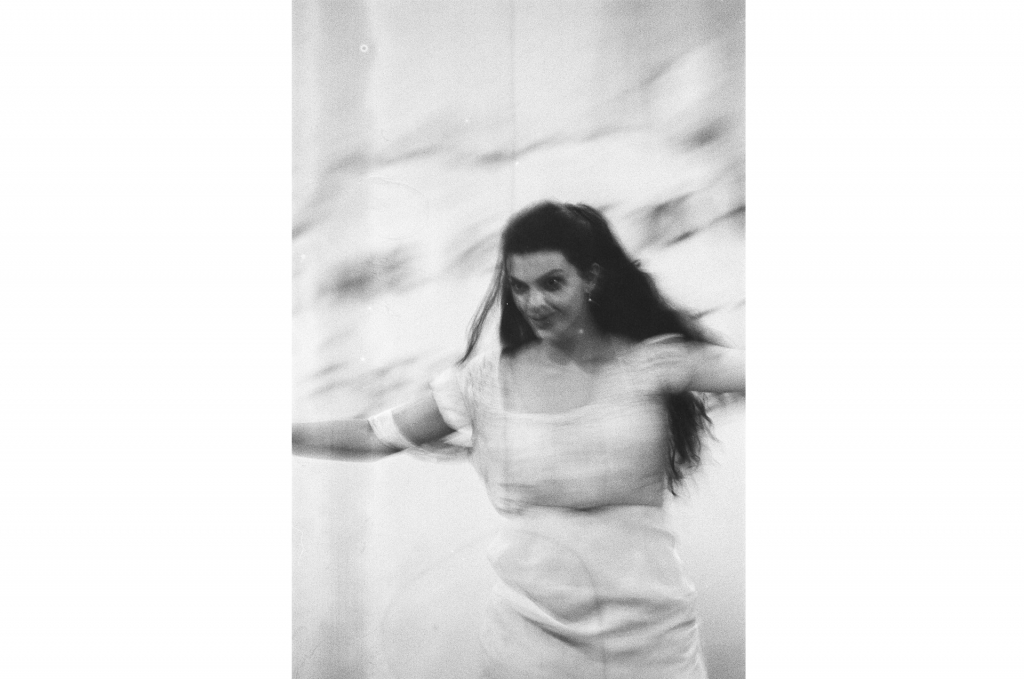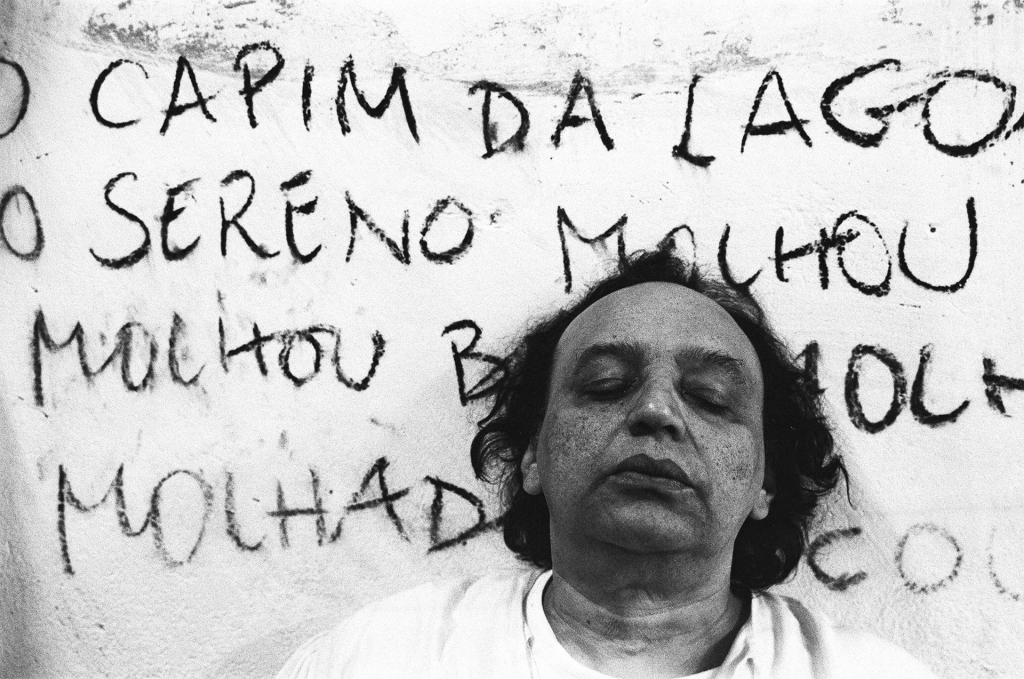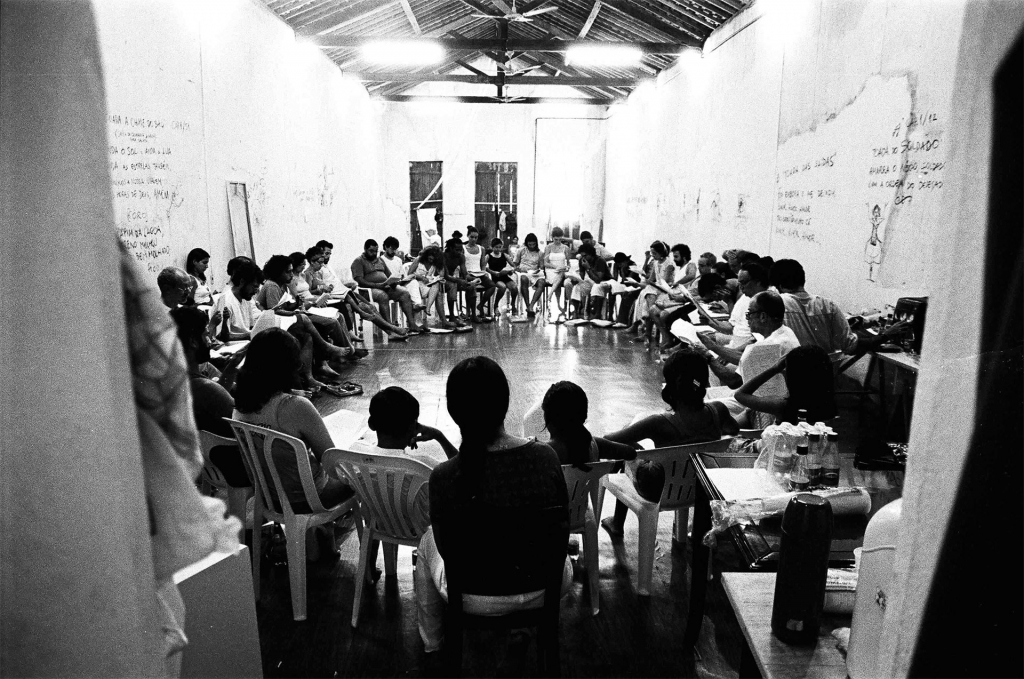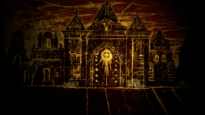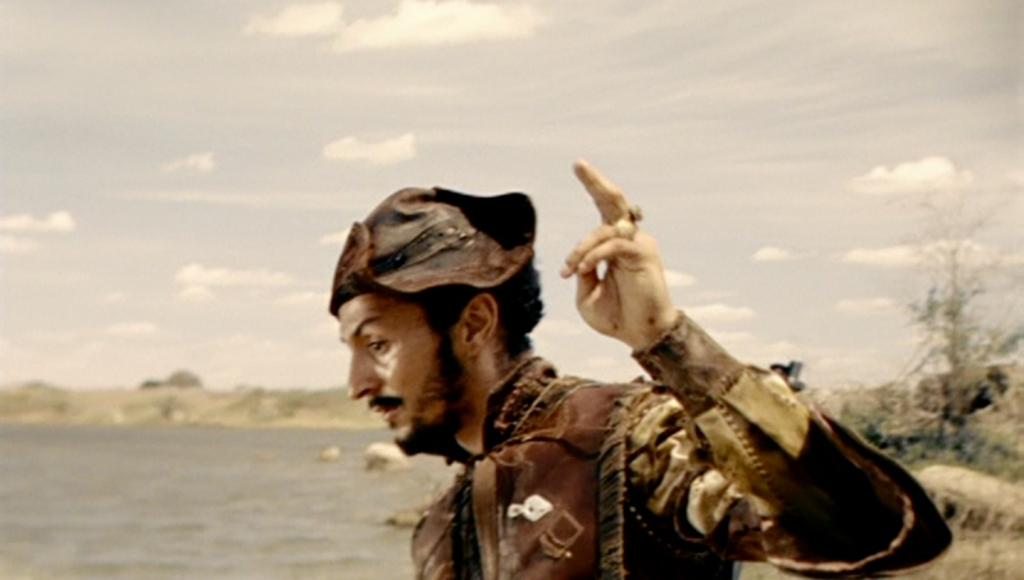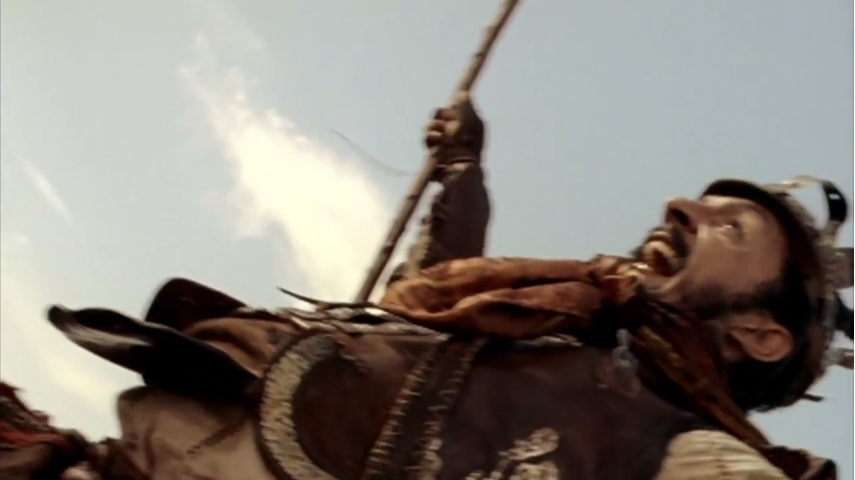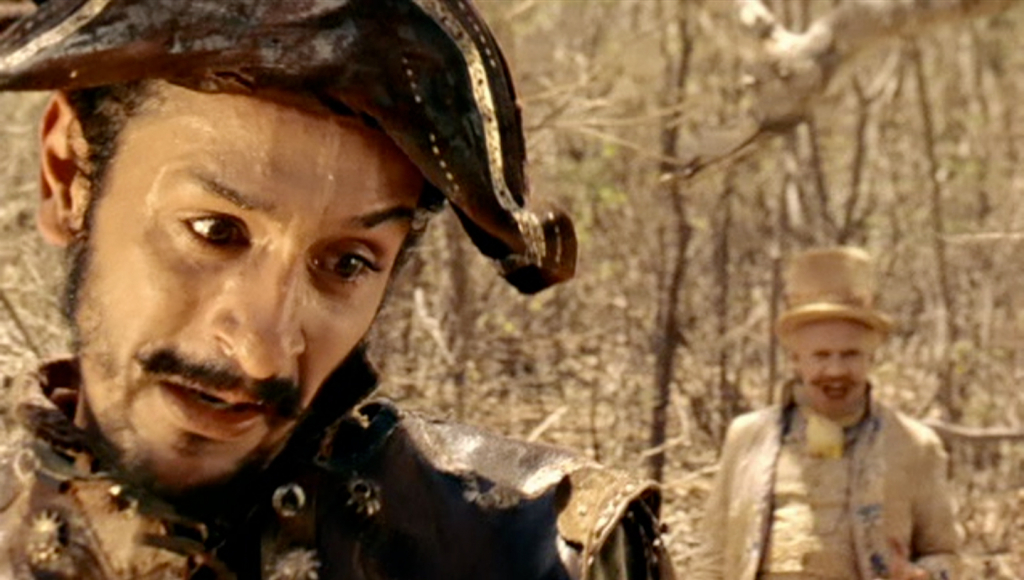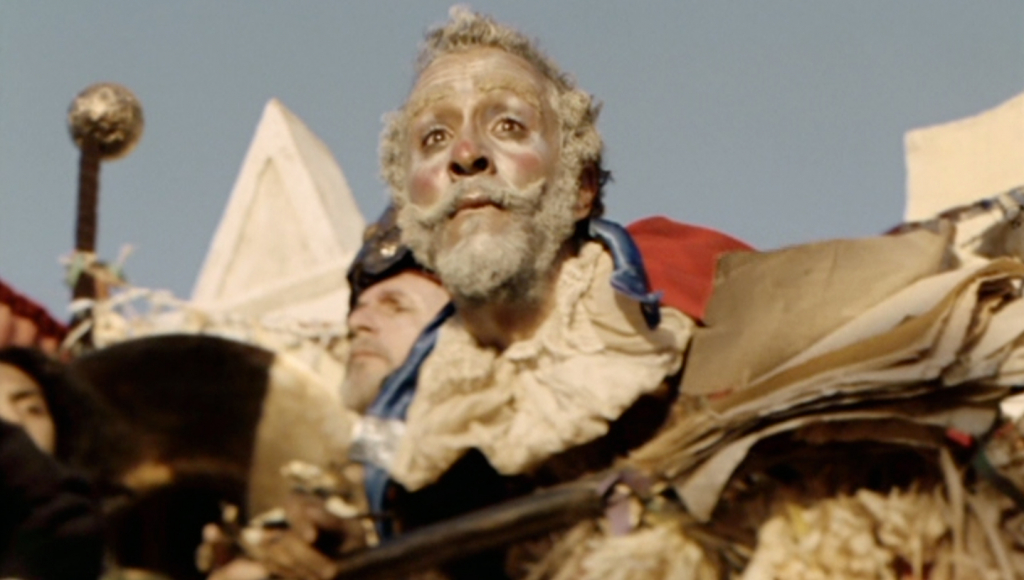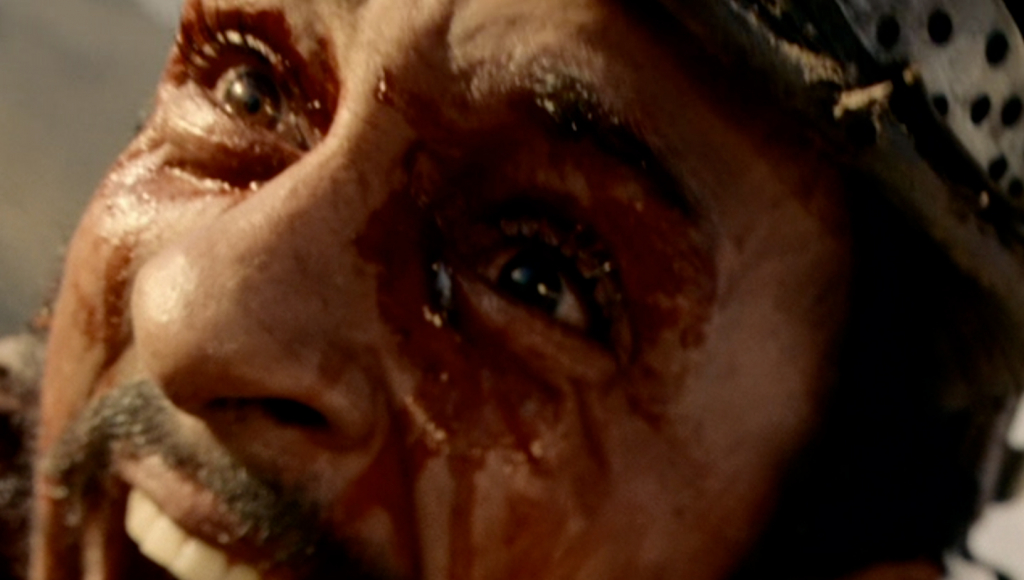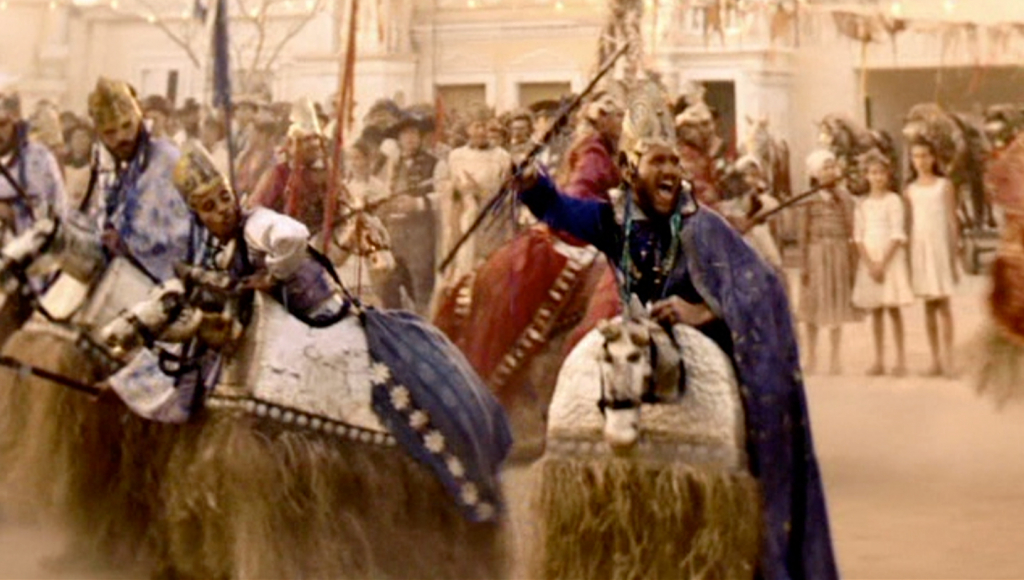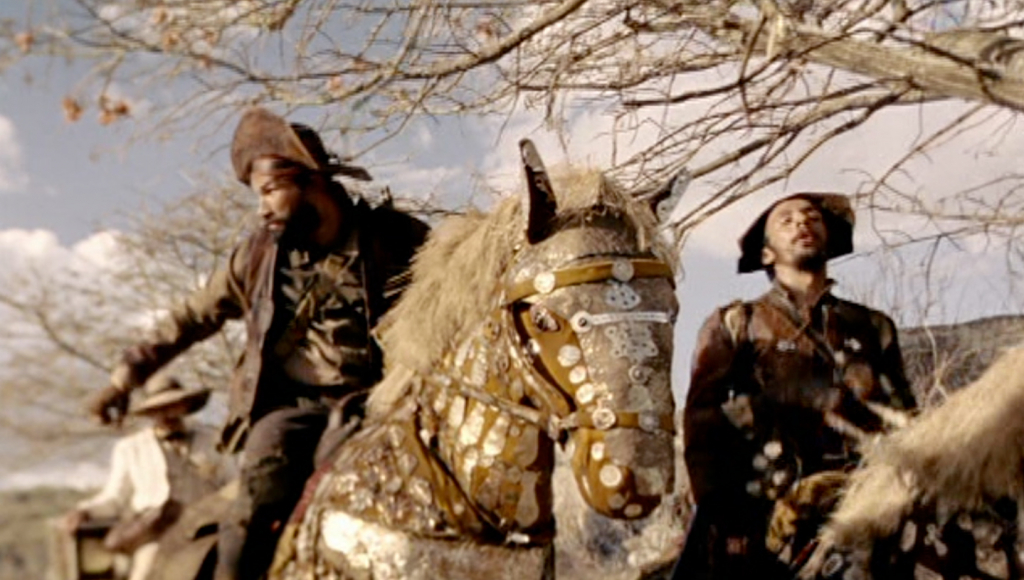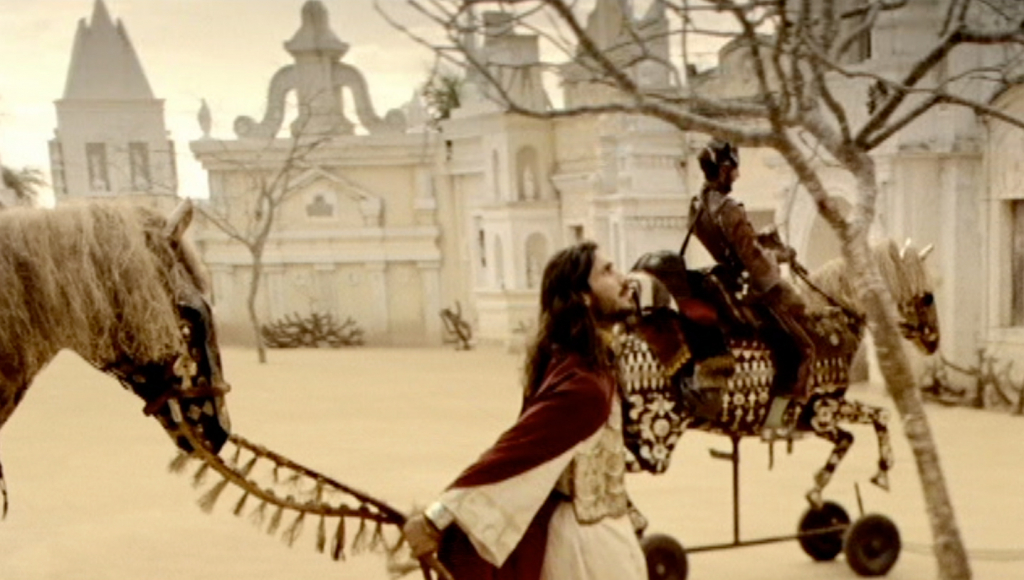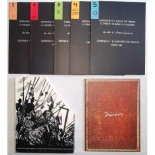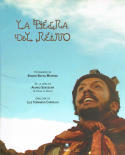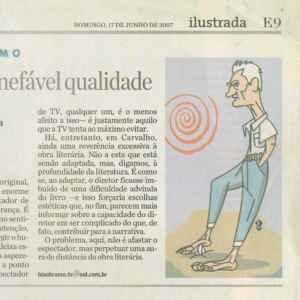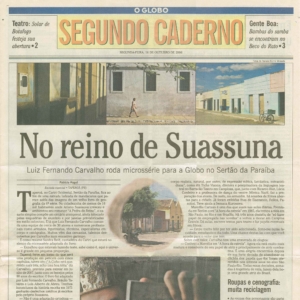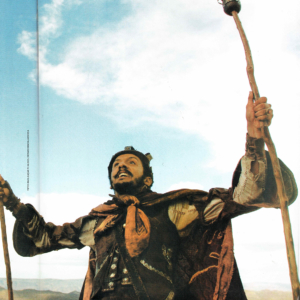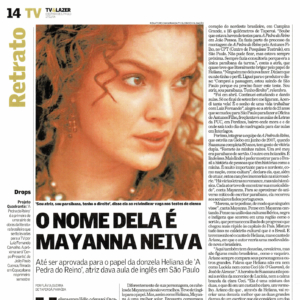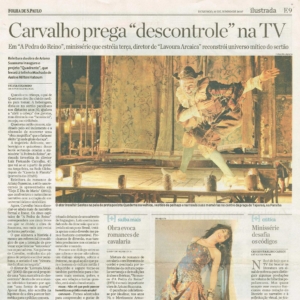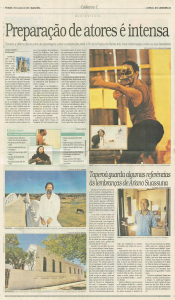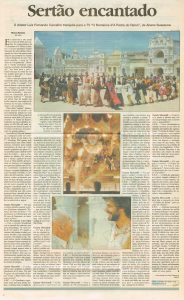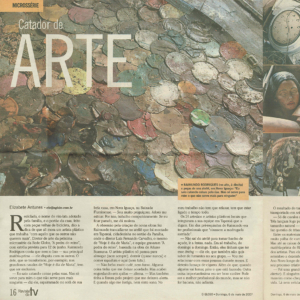“In my second meeting with Luiz, he simply looked at me and said: “Quaderna is yours’. It was just like that. I spent the next ten minutes in silence, looking at him, who I could swear he was holding his laughter, having fun with the image in front of him, shocked. He asked: ‘Did I fail to mention that to you earlier?’. I replied: ‘You did’. The he laughed and made a gesture, the first a corporal one, that I have to confess, I kept for myself to use when playing Quaderna. He looked to me over his shoulder, stretching his neck, then I saw there Quaderna was getting near. How come he does such a thing to me, all of a sudden: ‘He is yours’? Something only Quaderna would do. I got my very first inspiration for the character thanks to that moment.
The starting point of Quaderna, for me, was an interrogation mark. When I read Quaderna, I saw this seeker questioning everything, because he wanted to know things further. Then this was the first drawing I made of Quaderna on paper. And that I carried that same interrogation mark on to the body of the character. That is the reason why he as a body drawn with the spine. From the point on, with the help of Tiche Viana, Ricardo Blat, direct and clear instructions of Luiz Fernando Carvalho and conversation we had with Ariano Suassuna and with Carlos Byington clarifying fundamental things in the enigmatic and unconscious fields, additional things were added. As the rhythm of Quaderna, which changes constantly – sometimes it is a hurricane, sometimes it is a breeze. Quaderna was built collectively, with so much help around him, but always from that wandering interrogation mark.
I see Quaderna as a great seeker, a man that is in search of the full being that we once were one day in the presence of God. He goes after that dream by searching for his roots. The path he does up to its enchanted stone considers the roots of his family, his blood, his land, his region, his ancestors.
The voice of Quaderna was a discovery in one of the exercises of Tiche Viana. She challenged us to find an animal that represented our character. The first animal that came to my mind was the Louro, as we call it here in the Northeast, and that most people known as parrot. The talking animal. Quaderna is a talking person. It was based on the Louro that I started playing with the voice of the animal and then I came up with this voice for Quaderna, who was capable of saying nice and sweet words, but equally ferocious and mad if needed”







